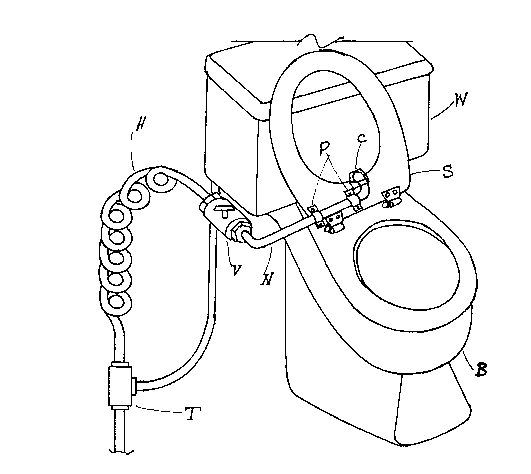Some of the information on this Web page has been provided by external sources. The Government of Canada is not responsible for the accuracy, reliability or currency of the information supplied by external sources. Users wishing to rely upon this information should consult directly with the source of the information. Content provided by external sources is not subject to official languages, privacy and accessibility requirements.
Any discrepancies in the text and image of the Claims and Abstract are due to differing posting times. Text of the Claims and Abstract are posted:
| (12) Patent: | (11) CA 2071377 |
|---|---|
| (54) English Title: | CLEAN BIDET |
| (54) French Title: | BIDET MONTE SUR W.C. |
| Status: | Expired and beyond the Period of Reversal |
| (51) International Patent Classification (IPC): |
|
|---|---|
| (72) Inventors : |
|
| (73) Owners : |
|
| (71) Applicants : |
|
| (74) Agent: | |
| (74) Associate agent: | |
| (45) Issued: | 1995-03-14 |
| (22) Filed Date: | 1992-06-16 |
| (41) Open to Public Inspection: | 1993-12-17 |
| Examination requested: | 1992-06-16 |
| Availability of licence: | N/A |
| Dedicated to the Public: | N/A |
| (25) Language of filing: | English |
| Patent Cooperation Treaty (PCT): | No |
|---|
| (30) Application Priority Data: | None |
|---|
In a device to wash the anus area after defecation, it is known that a jet of
water from a nozzle installed under a toilet bowl seat can be used, (US
Patent, 276 2058 & 346 2766). This device consists of a rigid nozzle that
is connected to the water supply line of toilet water tank by means of a
flexible hose and a Tee connection. Tee connection will be installed on
the water tank supply line to branch water supply to the device. A valve
will also be installed between the rigid nozzle and the flexible hose. The
rigid nozzle will be mounted underneath the toilet seat by means of two
clamps. The nozzle discharge opening remains blocked by a simple cover
when the device is not in use and it is exposed only when the water valve
is turned open for washing.
Note: Claims are shown in the official language in which they were submitted.
Note: Descriptions are shown in the official language in which they were submitted.

2024-08-01:As part of the Next Generation Patents (NGP) transition, the Canadian Patents Database (CPD) now contains a more detailed Event History, which replicates the Event Log of our new back-office solution.
Please note that "Inactive:" events refers to events no longer in use in our new back-office solution.
For a clearer understanding of the status of the application/patent presented on this page, the site Disclaimer , as well as the definitions for Patent , Event History , Maintenance Fee and Payment History should be consulted.
| Description | Date |
|---|---|
| Inactive: IPC deactivated | 2016-01-16 |
| Inactive: IPC assigned | 2015-08-17 |
| Inactive: First IPC derived | 2006-03-11 |
| Time Limit for Reversal Expired | 1997-06-16 |
| Letter Sent | 1996-06-17 |
| Grant by Issuance | 1995-03-14 |
| Application Published (Open to Public Inspection) | 1993-12-17 |
| All Requirements for Examination Determined Compliant | 1992-06-16 |
| Request for Examination Requirements Determined Compliant | 1992-06-16 |
There is no abandonment history.
The last payment was received on
Note : If the full payment has not been received on or before the date indicated, a further fee may be required which may be one of the following
Please refer to the CIPO Patent Fees web page to see all current fee amounts.
| Fee Type | Anniversary Year | Due Date | Paid Date |
|---|---|---|---|
| MF (application, 2nd anniv.) - small | 02 | 1994-06-16 |
Note: Records showing the ownership history in alphabetical order.
| Current Owners on Record |
|---|
| PARVIZ PEZESHK ZAD |
| Past Owners on Record |
|---|
| None |